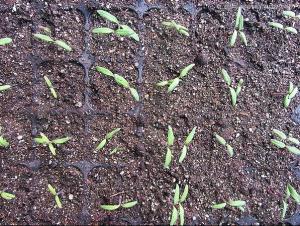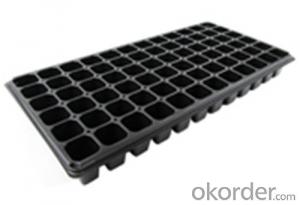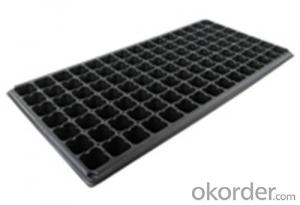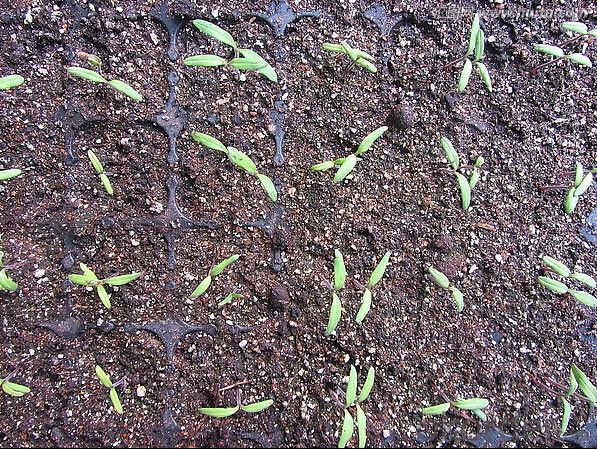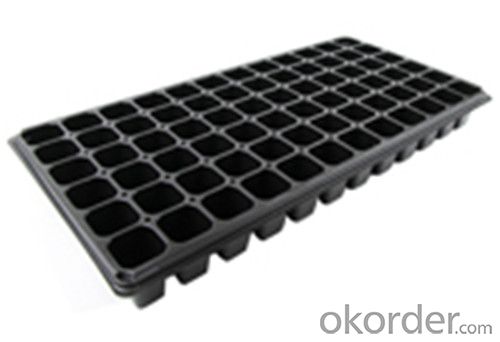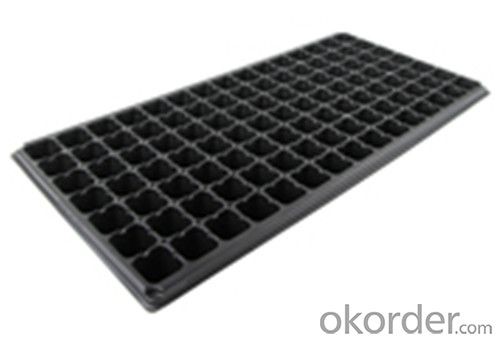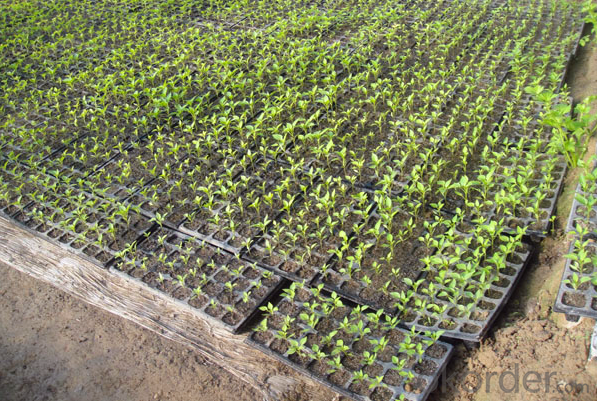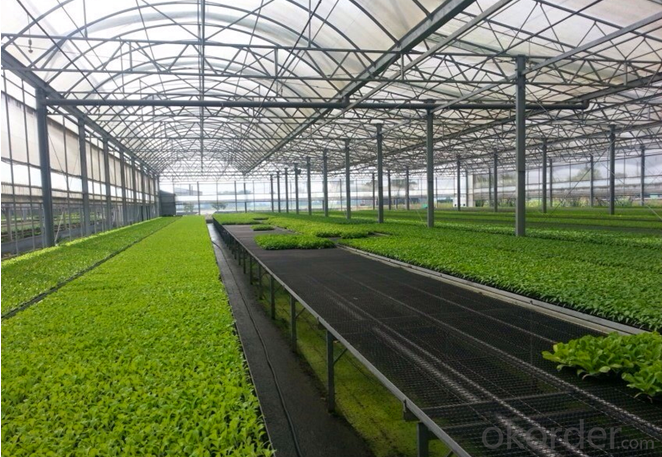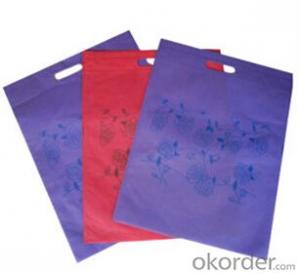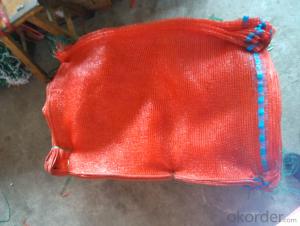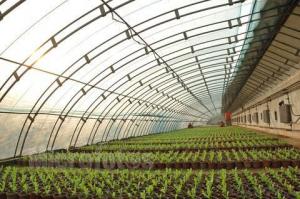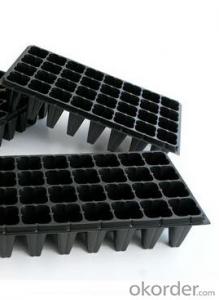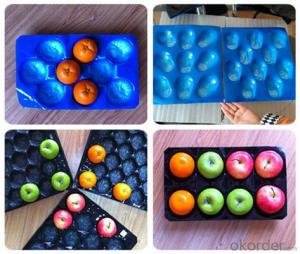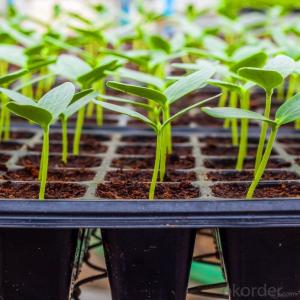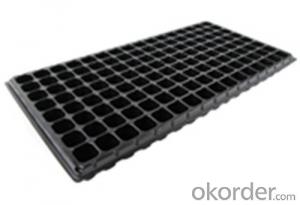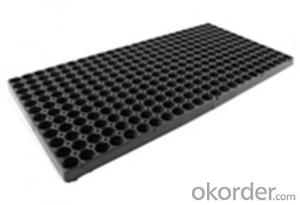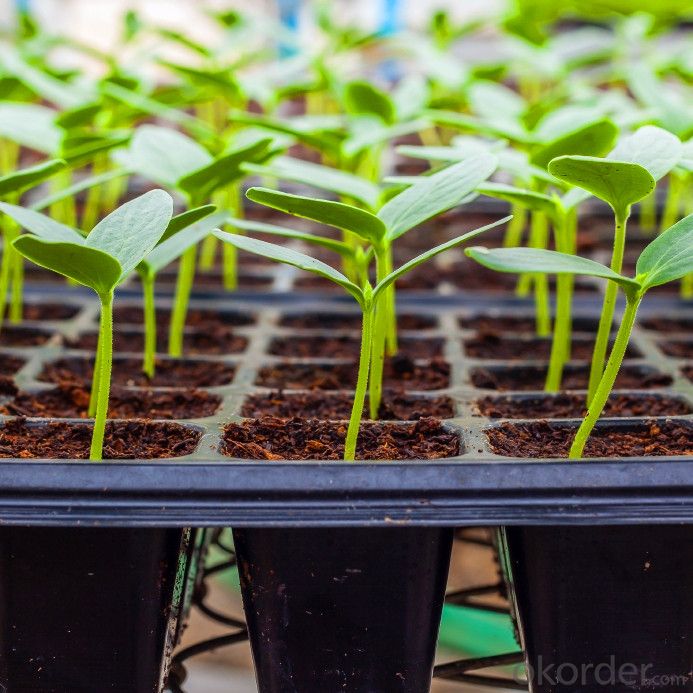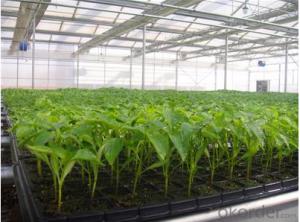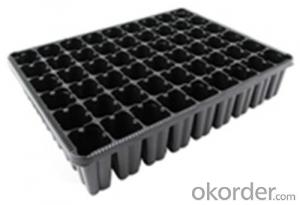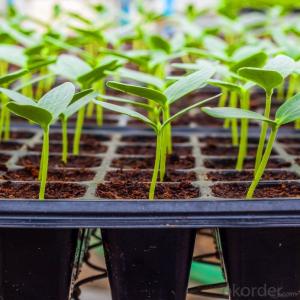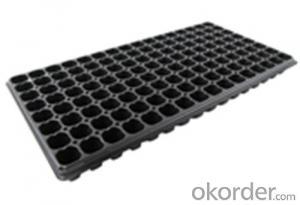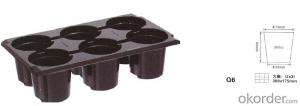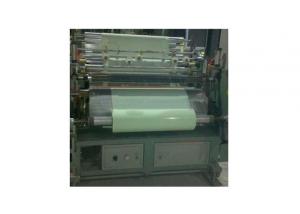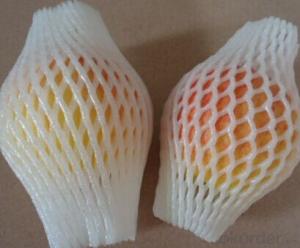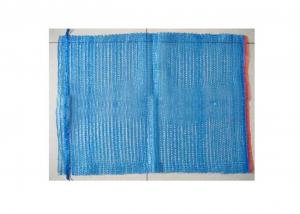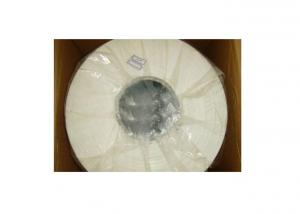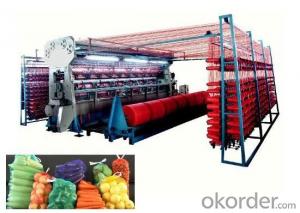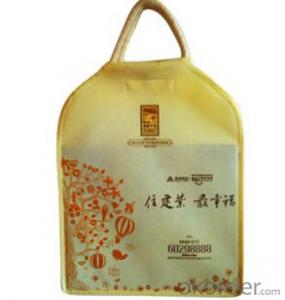Plastic Seedling tray Plastic Nursery Seeding Tray Seed Plant Propagator
- Loading Port:
- China main port
- Payment Terms:
- TT OR LC
- Min Order Qty:
- 1000 pc
- Supply Capability:
- 10000000 pc/month
OKorder Service Pledge
OKorder Financial Service
You Might Also Like
Structure of the seed tray: · Top quality and competitive price. · Variety design and good appearance. · Easy to use, and remove. · Durable and reusable. · Eco-Friendly.
Advantages: · Top quality and competitive price. · Variety design and good appearance. · Easy to use, and remove. · Durable and reusable. · Eco-Friendly.
Application: · Ideal for Starting seeds and Transplanting Seedling. · Suitable for both manual and automatic planting. · Suitable for Propagating Vegetables, Flowers and other plant from seed · in green-house or indoors.
Description Main Features of the seed tray: · Ideal for Starting seeds and Transplanting Seedling. · Suitable for both manual and automatic planting. · Suitable for Propagating Vegetables, Flowers and other plant from seed in green-house or indoors. Using time: · thickness of 0.5mm can be used 1 to 2 times. · thickness of 0.6mm can be used 3 to 4 times. · thickness of 0.7mm can be used 5 to 6 times. · thickness of 0.8mm can be used 7 to 8 times. · thickness of 0.9mm can be used 8 to 9 times. · thickness of 1.0mm can be used 8 to 10 times. Thickness vs. Weight: · Thickness of trays are from 0.5mm to 1.0mm. · 1.0mm: 155g±5g; 100pcs/ctn. · 0.9mm: 140g±5g; 120pcs/ctn. · 0.7mm: 110g±5g; 150pcs/ctn. · 0.6mm: 95g±5g; 180pcs/ctn. · 0.5mm: 80g±5g; 200pcs/ctn.
Seed Tray Specification: Materialps/pvcThickness0.5mm-1.5mm, standard:1mmWeight80g(±5)g-230g(±5)g, Standard weight:155g(±5)gSizelength:490mm-540mm, width:190mm-345mm,depth:25mm-150mm Standard:54mmX28mmCell count18-512Packagein cartonUsing time8-10 times
FAQ: Q:How Can I Get A Sample? A:You can get samples by communicate with our export sales. Q:How Long Is Delivery? A:Delivery time will be 7-25 days according to order quantity. Q:What Is The MOQ? A:Our MOQ is 1*20FT container quantity, allow to mix several items. Q:What Is Our Normal Payments Terms? A:Our normal payment terms now is T/T, L/C or Western Union,Papal. Q:How Do I Order Your Products? A:You can check our website for any items you interest and you can also get communication with our export sales and order for it accordingly. Q:What Kinds Of Material We Use In Our Product? A:Our plastic flower pots use material such as PP polymer or PE polymer.
|
- Q: How are plastic irrigation pipes used in agriculture?
- Plastic irrigation pipes are used in agriculture to deliver water directly to the roots of plants, ensuring efficient and targeted irrigation. These pipes are durable, lightweight, and flexible, making them easy to install and navigate around the fields. They are typically buried beneath the soil or laid on the surface, allowing water to be distributed evenly and efficiently to crops. Additionally, plastic irrigation pipes can be fitted with various sprinklers, emitters, or drippers, allowing farmers to customize the irrigation system based on the specific needs of different crops.
- Q: What is the best ground cover for a coastal bluff garden?
- A suitable ground cover for a coastal bluff garden would be beach strawberry (Fragaria chiloensis). It is a low-growing plant that can tolerate the salty air and sandy soil found near the coast, while also providing erosion control and attractive foliage.
- Q: define the term (Plastic)
- Plastic covers a range of synthetic or semisynthetic polymerization products. They are composed of organic condensation or addition polymers and may contain other substances to improve performance or economics. There are few natural polymers generally considered to be plastics. Plastics can be formed into objects or films or fibers. Their name is derived from the fact that many are malleable, having the property of plasticity.
- Q: How do agricultural plastic products help with seedling protection?
- Agricultural plastic products help with seedling protection by providing a physical barrier that shields young plants from external factors such as pests, harsh weather conditions, and weed competition. These products, like plastic mulch films or greenhouse covers, create a controlled environment that enhances seed germination, accelerates growth, and improves overall plant health. Additionally, plastic products can help retain moisture in the soil, regulate temperature, and prevent erosion, all of which contribute to better seedling establishment and higher crop yields.
- Q: How and what do you use to join two peices of plastic (specifically abs) using molecular bonding?
- The only plastics which truly bond molecularly are two part resins like epoxys or thermosetting resins which cure when heated. ABS plastics start as monomers and poylmerize into their final form. Because ABS plastics are based on Styrene, aromatic solvents such as benzene or toluene can be used to bond them together. This is principally how model glue is used to bond polystyrene plastic models.
- Q: Well, I'm just wondering what your view on plastic surgery is. I, myself, don't consider it very important. Plastic surgeons don't save lives. Therefore, they are not real doctors.
- I in my opinion believe that men and women are means too poor relating to beauty surgical procedures. Although I do not plan to ever get plastic surgical procedure, there is definitely not anything flawed with individuals who do. It's their frame, they might do anything the **** they wanna do with it, anything makes them joyful. Plastic surgical procedure might also be a well factor, it might spice up the arrogance of those people who are unsatisfied with themselves and their our bodies.
- Q: Why is it printed on plastic bottles that it should be crushed after use? Is it because the plastic bottle turns toxic after 1st use? Are these plastic mineral water bottles re-usable? Please answer me.
- No okorder / because plastics are an oil byproduct so the less we plastic bottle the less Co2 emissions create.
- Q: Are nursery trays suitable for deep-rooted plants?
- No, nursery trays are not suitable for deep-rooted plants as they tend to have shallow compartments that restrict the growth and development of deep roots.
- Q: On the surface it seems like an eco-friendly alternative to petroleum-based plastics, but I've heard that it can absorb substances that are stored in it, and become unsanitary. Is this true?
- as far as i know there is a so ya based plastic that is environmental friendly
- Q: is this ok , plastic bin is cheaper than fish tank
- thats fine as longs as the plastic is non-toxic. make sure you wash out the tub before you use it. i know people who use large plastic tubs to raise fry because they need the fry to grow bigger before they can sell them and they dont have the tank space
Send your message to us
Plastic Seedling tray Plastic Nursery Seeding Tray Seed Plant Propagator
- Loading Port:
- China main port
- Payment Terms:
- TT OR LC
- Min Order Qty:
- 1000 pc
- Supply Capability:
- 10000000 pc/month
OKorder Service Pledge
OKorder Financial Service
Similar products
Hot products
Hot Searches
Related keywords
